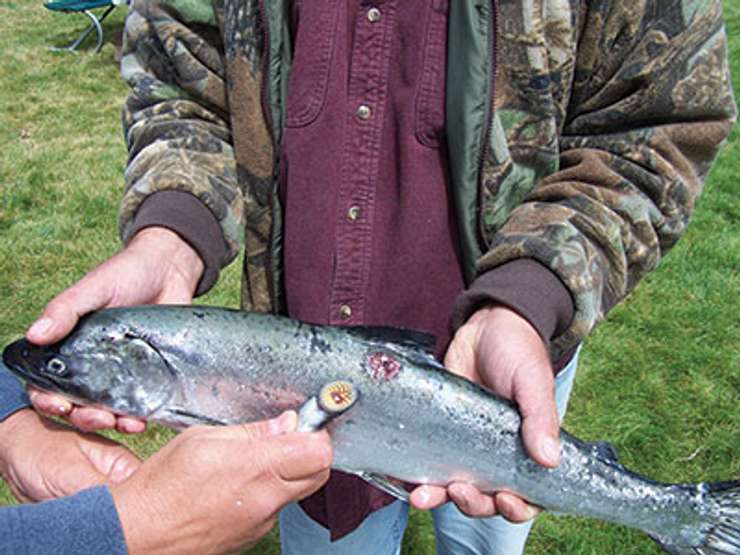Invasive sea lampreys, also known as "vampire fish" are wreaking havoc in the Great Lakes this year.
The parasite's population has exploded, with Lake Huron seeing a dramatic increase from about 100,000 to nearly 200,000.
The long snake-like creature has a mouth ringed with sharp teeth that acts as a suction cup that latches onto the side of a fish.
A tongue then flicks out from the middle of the mouth and drills a hole through the scales and skin of the fish and feeds on its blood and body fluids.

Great Lakes Fishery Commission Deputy Executive Secretary Marc Gaden said the sea lamprey originally swam its way into the Great Lakes in the early 20th century through shipping canals.
"They're native to the Atlantic Ocean and after they entered the Great Lakes, quite accidentally, they began a fish-killing spree and wreaked havoc on the Great Lakes fishery," said Gaden. "At one point, before we started controlling lampreys in the 1950s, they were killing many times a commercial catch. In other words, far more than humans were harvesting."
Gaden said, like many other things, the COVID-19 pandemic is to blame for a spike in lampreys.
"Lampreys are controlled, it's a species that we can manage in the Great Lakes," he said. "They're here to stay but we do have a control program. The Great Lakes Fishery Commission carries it out under a treaty between the United States and Canada. The lamprey live in streams for many years as harmless larvae. Workers are able to go into the streams and remove the larvae using a pesticide that is selective to lamprey. The reason that we've seen a spike in recent years is that the program was curtailed in 2020 and 2021 because of travel restrictions related to COVID. So we actually have to go out into streams, take the battle to where the lampreys are, and remove them from the streams. With the travel restrictions, the amount of treatments we were able to do was significantly reduced."
Gaden said there is a lag time, the lampreys that survived the treatments in 2020 came back to spawn in 2022.
"That's very disturbing because the one thing we do know is that the more sea lampreys that are in the lakes, the fewer fish there are," he said. "So, we're looking at the situation and how to tackle it. We do know how to control lampreys so we can use our efforts and drive those numbers down again but it's going to take a few years to get back to where we were before COVID on that. That's the nature of the beast that we're dealing with. If they're given the opportunity to bounce back, if controls are relaxed for a small amount of time, these lampreys will proliferate in numbers. The females can have about 100,000 eggs."
Gaden said the positive news is that the sea lampreys are not a threat to humans, and fishers don't have to be concerned if they happen to catch one.
"It's rare that someone would catch a fish with a lamprey still attached because the lamprey will realize that something is a little weird if it's suddenly being hauled up to the surface," said Gaden. "Usually, the lamprey will drop off before it gets into a boat. Occasionally, an angler will catch one, haul a fish into a boat with a lamprey attached. If they don't know what they're looking at, it's often a shock. If you have the camera running, it usually makes for some good YouTube viewing. They're not harmful to people, they don't feed on warm-blooded creatures. It might grab onto you because it wants to keep from flopping around, but otherwise it's not harmful in the slightest."
If you do happen to catch one, don't throw it back into the water as it will continue to spawn and feed on the fish population.